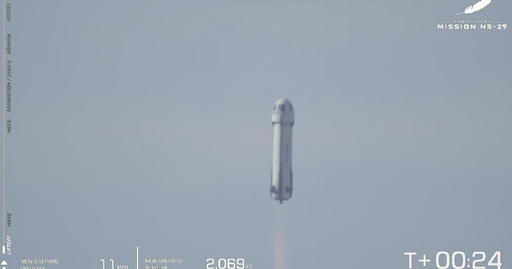Jeff Bezos’ aerospace venture successfully provided a glimpse of the moon’s gravity on Tuesday, all while remaining close to home.
Blue Origin conducted a launch from West Texas, sending 29 lunar technology experiments to the edge of space. The mission involved creating artificial lunar gravity — which is one-sixth of Earth’s gravity — through the spinning of the capsule.
This marked Blue Origin’s inaugural effort to simulate the gravitational conditions of the moon.
NASA aims to test equipment on shorter space flights to identify any potential issues before missions to the lunar surface. The array of experiments, primarily financed by NASA, included innovative methods to prevent lunar dust from adhering to astronauts’ spacesuits and tools.
Replicating the moon’s gravitational environment during these flights can facilitate advanced research at a significantly reduced cost. Additionally, Blue Origin’s CEO Dave Limp noted on X that such experiments may closely resemble conditions on Mars and other celestial bodies within our solar system.
The New Shepard rocket successfully completed its mission, landing as intended after its launch in the late morning. The capsule returned safely to the desert, bringing an end to the 10-minute flight with the experiments.
New Shepard alternates its missions with passenger flights and scientific experiments during its brief journeys into space. Meanwhile, Blue Origin’s larger orbital craft, New Glenn, recently had its inaugural launch from Cape Canaveral, Florida, last month.




